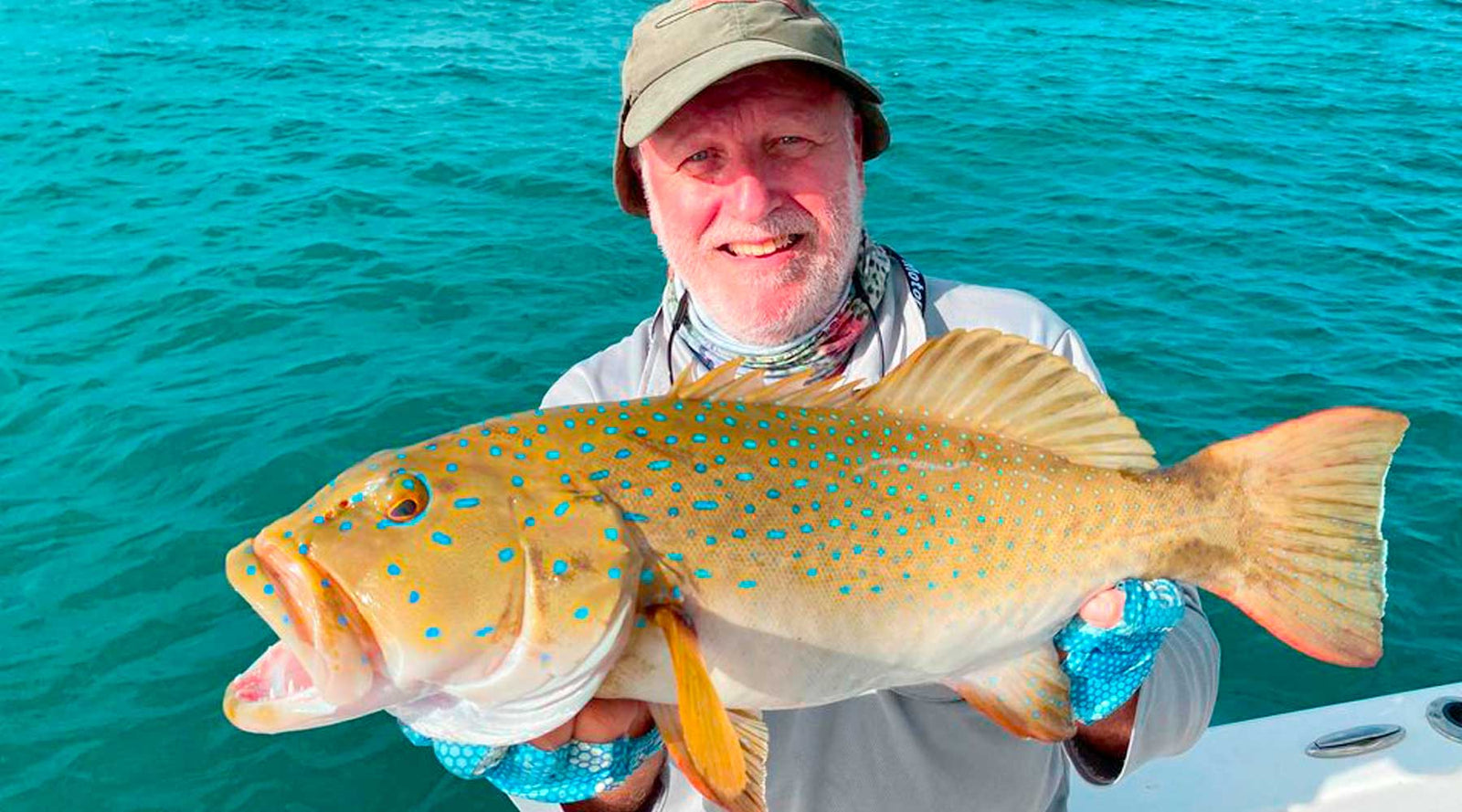Your Cart is Empty
Handcrafted for Adventure, Hooked on Tradition

Water temperature has dropped and so have the expectations of so many anglers eager to land a Barramundi. All is not lost though, contrary to what is often spoke of ‘barra don’t eat in winter, there is certainly still great opportunity to snag yourself a chrome slab.

Photo above: Big fish will bite in winter. Knowing the location, barra movements and influence of current is the key. OH and GO SLOW!
Understanding how depth effects water temperature and barramundi habits is the key to finding them and opens up windows of opportunity in what is referred to as a seemly hopeless period.
Water Temperature
Water temperature plays a pivotal role to the habits of barra, particularly during the winter period. The tip is to understand the fluctuation of temperature throughout the water column.
Summer is a more a productive period for a few reasons and much can be learnt from their summer habits to better understand their winter ones.
Barramundi become active as annual spawning events happen during the summer period. A lot is still not known about the actual timings of these events, but it is known that each spawning event occurs during full moon periods as early as October and as late as May. These periods are obviously effected by environmental conditions, particularly rain events.
It widely known that barra actively feed in the shallows, with dirty water providing cover for bait fish and barra effortlessly dine in on this natural sushi train.
The temperature in the first 1 metre of water has the most volatile changes in temperature, however during summer the temperature change between day and night is minimal and therefore the shallows stay constant enough for a barramundi's core body temp not to be thrown out to much. But, winter is a different story! Larger changes in outside temp see the first 1 metre of the water column fluctuate and barra hate change.
However, at depths between 3-10 metre temperatures become more stable and therefore barra go deep, as its more comfortable to reside in. Due to this pattern during winter barra also tend to congregate in these fewer, deeper areas of comfort. So in winter it’s more likely to find more, but catch less in some cases.
Current
It’s a common misconception that because barramundi are lazy they dislike current. There is some truth in that, however one must remember when we feel lazy and don’t feel like cooking dinner what do we do? Order home delivery pizza! With this analogy in mind being lazy as means barra like there food brought to them. This is where current plays a major role.
Regardless of the season, but particularly in winter you’ll find barra in deeper areas with some current. I’m not talking a large current, but some where adjacent to or where the current kisses a bank, snag, sandbar etc. The Rockhampton town reaches are a perfect example of the perfect winter barra scenario. Plenty of depth, rock obstacles and due to the man made barrage, generally a gentle current throughout all tidal cycles. It’s not uncommon for competent Barramundi anglers to notch up cricket scores of barra in the town reaches in the middle of June.

Photo above: Looking in deep areas with right amount of current and structure can produce some salivating screen shots in winter.
Bite Times
Bite times are often spoken about by good barra anglers, but I think for some it's never really understood. Long periods of fishing on one congregation can unlock reading habits. Knowing when they occur is important in having a successful winters day.
Having run a diary on each of the schools I have fished the best bite periods always occur either side of the change in a tide, or as I refer to it as ‘the last and first of the push. When you’re on the water next, observe the force of current either side of the change.
In my experience there is always a final surge prior to a slack period of the tide change and then obviously an initial surge after the change. Prime bite times!
Slow Everything Down
Lure choicedoesn’t change from summer to winter, however you need to slow everything down a coupe of notches and keep the artificial in front of them longer.
Finely tuned Guttermaster or Mutt deeps are the search dogs of choice to entice a bite. Winter period generally see barra bite out of reaction rather than a deliberate feed bite. Bites become subtle and it take a keen angler with good feel through the rod and good reflex’s to convert bites into fish.
When I say tuning, so mean making deliberate alterations to the lure to get it to suspend or very slowly ascend. It reinforces the tip of keeping the lure in front of them for longer.

Photo above: Dog handler in the making, Isak has his time to shine using the ultra slow technique to entice a bite.
Wrapping Up
Finding barra in winter can be somewhat easier than summer, as congregations come to together to soak up the comfort of deeper water with consistent water temps. But catching them can definitely be a more challenging, but understanding the key factors above hopefully will see your results turn around this winter period.

Photo above: Apprentice Dog Handler Byron with a nice winter fish landed off a school positioned on a deep bank.
Remember find deep water, current, fish peaks times and GO SLOW!
Tight Lines
Westo aka #1 Dog Handler
Comments will be approved before showing up.

Richard Thorpe
February 02, 2022
Great article